What Are Good Chapter Books for 3rd Graders
Favorite books for 3rd graders
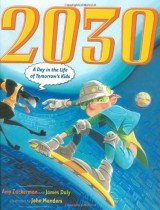
2030: A Day in the Life of Tomorrow's Kids
by: Amy Zuckerman and Jim Daly, illustrated by: John Manders - (Dutton, 2009) 32 pages.
A talking dog, a housecleaning robot and a three-dimensional "data orb" are among the many cool features that kids might enjoy in the future, according to this lighthearted look at 2030. The breezy narrative follows one boy through a typical day, highlighting many interesting aspects of his world. Fanciful cartoon drawings show a lively and appealing world full of new and intriguing activities that correspond neatly to modern equivalents. Schools are now made from plasticized blocks that snap together, for example, while recess features virtual batting practice and a "smart trampoline." Recreational activities include magnetized hovering skateboards and a virtual-reality "Fanta-trek Center." Some social changes are briefly noted, such as new career paths and the increase of marriages between different ethnicities. Interaction with the natural world is not mentioned, although many of the new technologies have eco-friendly components and the food is all meatless and delicious.
Find 2030: A Day in the Life of Tomorrow's Kids at your local library.
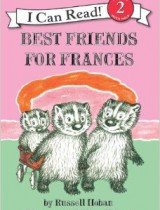
Best Friends for Frances
by: Russell Hoban, illustrated by: Lillian Hoban - (Harper & Row, 1969) 32 pages.
Frances can't imagine being friends with her little sister Gloria until she is excluded from the all-boys baseball game. To her surprise, Gloria makes a good friend, but can she ever be a best friend? If your child enjoys this book, introduce her to other stories in this series including A Birthday for Frances.
Perfect for: Kids who like making friends.
Find Best Friends for Frances at your local library.
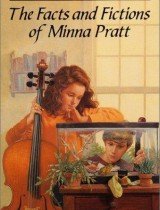
The Facts and Fictions of Minna Pratt
by: Patricia MacLachlan - (Harper & Row, 1988) 144 pages.
Minna grows up with some odd friends and relatives. MacLachlan's stories are a rarity in today's children's books — simple, gentle tales of children who manage to be reasonably nice kids without being insipid. Minna Pratt is an amazingly delightful book, a book that makes you smile all through it, a book that makes you want to know all of the characters in real life.
Perfect for: Kids who like making friends.
Find The Facts and Fictions of Minna Pratt at your local library.
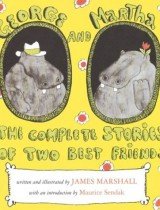
George and Martha
by: James Marshall - (Houghton Mifflin Company, 1972) 48 pages.
George and Martha are two hilarious hippo friends who invariably get themselves into sticky situations. Your child will love finding out what happens when George does not like the split pea soup that Martha has made for him in "Split Pea Soup," just one of the five humorous stories in this collection.
Perfect for: Kids who like making friends.
Find George and Martha at your local library.
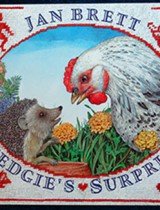
Hedgie's Surprise
by: Jan Brett - (Putnam Juvenile, 2000) 32 pages.
Henny wants to raise little chicks, but an elf keeps stealing her eggs before they hatch. Your child will be surprised to learn how her friend Hedgie helps Henny scare off the bothersome elf once and for all. Make a special point to draw your young child's attention to the nearly hidden pictures that border each page of this book.
Perfect for: Kids who like making friends.
Find Hedgie's Surprise at your local library.
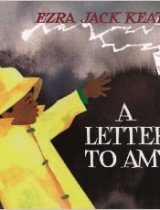
A Letter to Amy
by: Ezra Jack Keats - (Harper & Row, 1968) 32 pages.
In this classic book about friendship, Peter has a falling-out with his friend Amy. Peter fears the worst — that Amy will not come to his birthday party. Children will relate to this story's themes, and Ezra Jack Keats's collage illustrations will intrigue children and parents alike.
Perfect for: Kids who like making friends.
Find A Letter to Amy at your local library.
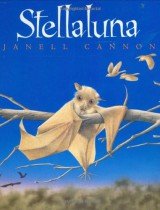
Stellaluna
by: Janell Cannon - (Harcourt Brace Jovanovich, 1993) 46 pages.
The hook: Stellaluna is a baby fruit bat happily flying along with her mother when an owl attacks. The poor little bat is knocked out of her mother's grasp and lands in a birds' nest. The mother bird accepts Stellaluna as long as she acts like a bird, not a bat. Soon enough, Stellaluna learns to eat bugs and stop hanging by her feet. When she finally has a chance to show her bird siblings, Pip, Flutter and Flap, what life as a bat is like, they are left all in a muddle: "How can we be so different and feel so much alike?" one asks. Anyone who has ever been in a position where they can't be who they really are will relate to Stellaluna's predicament. Cannon's award-winning illustrations convey the nocturnal world beautifully. Readers will be enchanted by this book with its messages of acceptance, friendship and a mothers' love.
Want to see the movie? The 2012 animated adaptation fleshes out the picture book with additional characters and songs while staying true to the story.
Perfect for: Kids who like making friends.
Find Stellaluna at your local library.
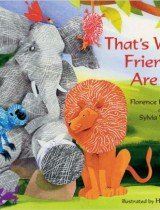
That's What Friends Are For
by: Florence Parry Heide and Sylvia Van Clief, illustrated by: Holly Meade - (Candlewick, 2003) 40 pages.
Theodore, the lumbering elephant, hurts his leg so badly he can't walk to the edge of the forest to meet his cousin. Will his friends' advice help him solve his problem, or does he need something more? The collages of painted paper and repeating text pattern will make this reprint of the 1968 classic one of your child's favorites.
Perfect for: Kids who like making friends.
Find That's What Friends Are For at your local library.
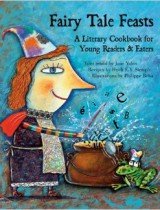
Fairy Tale Feasts: A Literary Cookbook for Young Readers and Eaters
by: Jane Yolen and Heidi E. Stemple, illustrated by: Philippe Beha - (Crocodile Books, 2006) 197 pages.
Jane Yolen retells familiar fairy tales in a brief and lively style, while her daughter, co-author Heidi Stemple, pairs them with at least one kid-friendly recipe that connects with the story's theme or references. For example, "Cinderella" is presented with a recipe for pumpkin tarts, while "The Runaway Pancake" is matched with, of course, a recipe for pancakes. The tales are divided into four sections: breakfast, lunch, dinner and dessert. The colorful illustrations add to the fun, and margin notes provide additional information on main ingredients and the stories and their origins. Adult supervision will be necessary for completing the recipes, but this book would be a great way for the whole family to share a reading and eating experience.
Perfect for: Kids who like to cook.
Find Fairy Tale Feasts: A Literary Cookbook for Young Readers and Eaters at your local library.
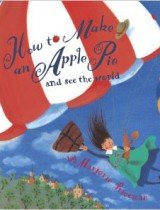
How to Make an Apple Pie and See the World
by: Marjorie Priceman - (Random House, 1994) 40 pages.
A young baker travels the world to find the finest ingredients for her apple pie. On her journey, she introduces the reader to cultures and products from around the globe. After the raw ingredients are prepared for the pie, the baker invites children from around the world to share it with her. The recipe is included at the end of the book.
Perfect for: Kids who like to cook.
Find How to Make an Apple Pie and See the World at your local library.
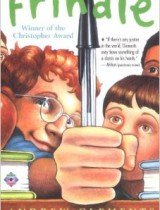
Frindle
by: Andrew Clements, illustrated by: Brian Selznick - (Simon & Schuster Books for Young Readers, 1996) 112 pages.
When clever yet precocious Nick decides to invent a new word for pen, it puts him at odds with his no-nonsense teacher, a stickler for grammar and proper word usage. What begins as a classroom duel over the usage of the word "frindle," escalates into a national word craze.
Perfect for: Kids who like realism.
Find Frindle at your local library.
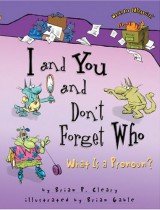
I and You and Don't Forget Who: What Is a Pronoun?
by: Brian P. Cleary, illustrated by: Brian Gable - (Lerner Publishing Group, 2004) 32 pages.
This book tells a story in rhyme, using different types of pronouns, leading children to become more apt to remember what pronouns are. The colorful illustrations feature funny monster-like creatures taking part in everyday activities.
Perfect for: Kids who like poetry.
Find I and You and Don't Forget Who: What Is a Pronoun? at your local library.
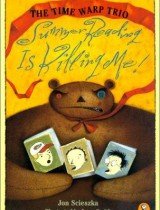
Summer Reading Is Killing Me
by: Jon Scieszka, illustrated by: Lane Smith - (Viking, 1998) 80 pages.
This installment of the popular Time Warp Trio series is homage to some of the best-ever summer reading lists. Sam, Fred and Joe happen to have in their possession a bona fide time traveling book. When one of the boys absentmindedly puts their summer reading list in the book, they find themselves in the midst of a literary battle of evil against good!
Perfect for: Kids who like fantasy.
Find Summer Reading is Killing Me at your local library.
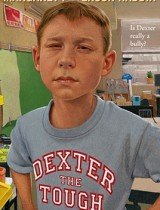
Dexter the Tough
by: Margaret Peterson Haddix, illustrated by: Mark Elliott - (Simon & Schuster, 2007) 144 pages.
Dexter is tough! On the first day of school, he lashes out when he trips and the other kids laugh at him. He punches another kid in the bathroom. But like so many kids with a gruff demeanor, Dexter is acting out because of a painful circumstance at home. He learns to express his emotions because of a gifted teacher and a writing assignment. I can think of no better lesson for a child to learn — feelings come out, one way or another — and finding a healthy way to sort them out is important. Perfect for a third-grader who has been bullied, or who can be too tough with others.
Perfect for: Kids who like stories about school.
Find Dexter the Tough at your local library.
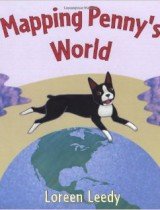
Mapping Penny's World
by: Loreen Leedy - (Henry Holt, 2000) 32 pages.
Lisa's class is learning how to make maps in school. For a homework assignment, she decides to make a map of her dog Penny's world. She includes the places where Penny likes to hide her toys and the best walking routes. This fun story will also help your child learn about the important features of maps.
Perfect for: Kids who like stories about school.
Find Mapping Penny's World at your local library.
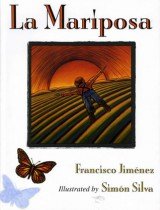
La Mariposa
by: Francisco Jiménez, illustrated by: Simón Silva - (Houghton Mifflin, 1998) 40 pages.
La Mariposa is a beautifully illustrated book about author Francisco Jiménez's childhood as a member of a Mexican migrant farm family. Young Francisco prepares himself for English-only first grade, without knowing a word of this new language. As the days pass, he becomes more and more uncertain if he will ever learn English, learn to read or find a friend. However, his beautiful drawings of butterflies help him win over the class bully and begin to transcend the barrier of language.
Perfect for: Kids who like stories about school.
Find La Mariposa at your local library.
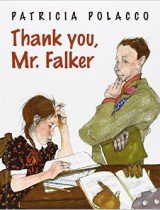
Thank You, Mr. Falker
by: Patricia Polacco - (Philomel, 1988) 40 pages.
Patricia Polacco describes what it was like to be unable to read in the fifth grade. She was taunted by classmates and plagued with her own self-doubt until a teacher finally recognized that she couldn't read and gave her the assurance and help she needed to succeed.
Perfect for: Kids who like stories about school.
Find Thank You, Mr. Falker at your local library.
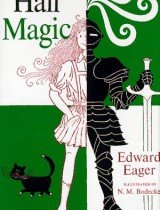
Half Magic
by: Edward Eager - (Oxford University Press, 1954) 208 pages.
Half Magic was the Magic Tree House of its day. As if wizardry was not enough, our four main characters take on multiple adventures with only "half" the magical prowess they need from a found coin. The kids devise clever ways to utilize the coin's capacity and the result is a very cool and captivating story. If your child falls in love with Half Magic, there are several sequels to quench their thirst for more.
Perfect for: Kids who like classic stories.
Find Half Magic at your local library.
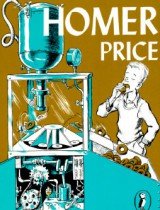
Homer Price
by: Robert McCloskey - (Puffin, 1943) 160 pages.
Homer Price's six sidesplitting exploits included here will keep your child reading and rolling in the aisles. Author of many wonderful books, including the award-winning Make Way for Ducklings and Blueberries for Sal, Robert McCloskey was truly inspired by his funny bone when he wrote these stories.
Perfect for: Kids who like classic stories.
Find Homer Price at your local library.
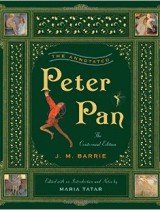
Peter Pan
by: J.M. Barrie - (Charles Scribner's Sons, 1911) 240 pages.
The hook: The original language is rich, and the story, so much a part of our culture, inspires children to dream. Some of the racial and gender stereotypes, typical for their time, will need explanation.
Want to watch the movie? The still-enchanting Disney classic contains some dated stereotypes but may prompt great discussions about how movies have changed since 1953.
Perfect for: Kids who like classic stories.
Find Peter Pan at your local library.
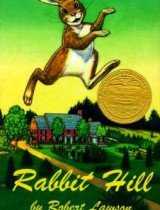
Rabbit Hill
by: Robert Lawson - (Viking Press, 1944) 128 pages.
Rabbit Hill is a time-honored book about a family of rabbits and the meaning of community. The characters are the same as they are in any neighborhood; you get a little of everything, both funny and frustrating. The inspired vocabulary makes for a welcome challenge and the environmental element of the story inspires discussion. Perfect for a parent-child book club.
Perfect for: Kids who like classic stories.
Find Rabbit Hill at your local library.
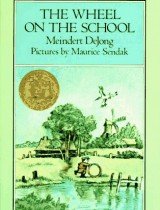
The Wheel on the School
by: Meindert DeJong, illustrated by: Maurice Sendak - (Harper & Bros., 1954) 320 pages.
Set in Holland in a tiny fishing village, this is the story of Lina and her classmates. After doing some research for a school report, Lina is determined to lure storks back to their village as they are believed to bring good luck. This book won the 1955 Newbery Award.
Perfect for: Kids who like classic stories.
Find The Wheel on the School at your local library.
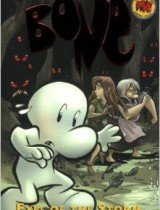
Bone #3: Eyes of the Storm
by: Jeff Smith - (Graphix, 1996) 192 pages.
Fone Bone, a fanciful character, hides from the rat creatures with Gran'ma Ben (a former queen) and his human friend, Thorn (who finds out she is a princess). This graphic novel weaves together intrigue and humor.
Perfect for: Kids who like fantasy stories.
Find Bone #3: Eyes of the Storm at your local library.
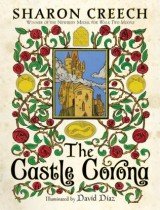
The Castle Corona
by: Sharon Creech, illustrated by: David Diaz - (Joanna Cotler Books, 2007) 336 pages.
This is a clever, fun fairytale with positive messages. There is mild fairytale violence and of course, budding romance. A storyteller tells a story in which parents and siblings die and thieves are killed; the killings are shown as unjust. Families can talk about being grateful and what the characters learned about the responsibilities that come with privilege. Why was the princess so unhappy? Why weren't riches enough for the royals? How did the peasants feel about the royals once they met them?
Perfect for: Kids who like fantasy stories.
Find The Castle Corona at your local library.
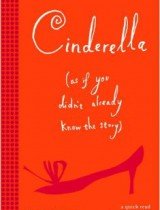
Cinderella (As if You Didn't Already Know the Story)
by: Barbara Ensor - (Random House, 2006) 128 pages.
This version of the familiar story allows girls to connect with Cinderella as they dive deep into the life of a fairy-tale princess. The modern-day twist allows the readers to hear the story in a unique and interesting way.
Perfect for: Kids who like fantasy stories.
Find Cinderella (As if You Didn't Already Know the Story) at your local library.
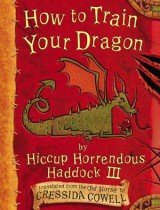
How to Train Your Dragon
by: Cressida Cowell - (Little, Brown Books for Young Readers, 2004) 224 pages.
The hook: This humorous 15-book series follows Hiccup Horrendous Haddock III, the brainy undersized son of a hulking Viking chief. He describes himself as "not a natural at the Heroism business." Hiccup, along with the other young Vikings, must choose a dragon hatchling to train and learn to become a warrior before being initiated as an adult member of the tribe. Filled with slightly rude humor that will appeal to preadolescents (including character names like "Dogsbreath the Duhbrain" and "Snotface Snotlout,"), and rough — but funny — illustrations, this engaging series is sustained by themes about being an underdog and succeeding in ways outside the norm.
Want to watch the movie? The animated adventures How to Train Your Dragon (2010) and How to Train Your Dragon 2 (2014) are loosely based on the book series.
Perfect for: Reluctant readers who are tickled by preteen humor.
Find our favorites at your local library: How to Train Your Dragon, How to Be a Pirate, How to Cheat a Dragon's Curse.
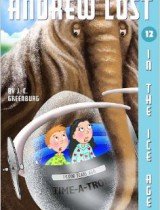
In the Ice Age: Andrew Lost #12
by: J.C. Greenburg - (Random House, 2005) 85 pages.
In this installment of the Andrew Lost series, Andrew and Judy must save their Uncle Al — a top-secret scientist and inventor of the Time-A-Tron time-travel machine — from the Ice Age. They use their creative problem-solving skills to escape from saber-toothed tigers and make friends with a group of Ice Age people, all while avoiding the clutches of the evil Doctor Kron-Tox. This book has it all: adventure, humor and a super-smart robot named Thudd who peppers the story with true facts about the Ice Age.
Perfect for: Kids who like fantasy stories.
Find In the Ice Age: Andrew Lost #12 at your local library.
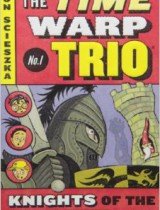
Knights of the Kitchen Table
by: Jon Scieszka - (Viking, 1991) 55 pages.
This first book in the Time Warp Trio Series is an imaginative and humorous read. The book begins with three boys celebrating a birthday. One of the presents happens to be a book with a card that states, "Be careful what you wish for." Once the book is opened, the boys are transported back to the time of knights, giants and dragons. If you enjoy adventure and fantasy this is a must read!
Perfect for: Kids who like fantasy stories.
Find Knights of the Kitchen Table at your local library.
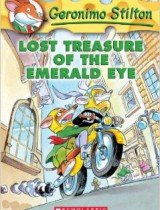
Lost Treasure of the Emerald Eye, Geronimo Stilton series
by: Geronimo Stilton - (Scholastic, 2004) 128 pages.
This series is a favorite for boys who are reluctant readers. Hip language and vocabulary, cultural references, multi-colored fonts, colorful illustrations and maps are both eye catching and motivating factors for young readers. Geronimo Stilton is a mouse who is editor-in-chief of a popular newspaper, and he has found himself in a particularly interesting situation. Geronimo's sister, Thea, discovers a treasure map, where an X marks the spot, of hidden treasure. Come join Geronimo and his sister as they travel to a faraway island in search of the Emerald Eye. Will a hurricane stop them or a sinking boat? You must read to find out.
Perfect for: Kids who like fantasy stories.
Find Lost Treasure of the Emerald Eye, Geronimo Stilton Series at your local library.
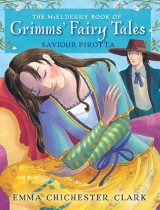
The McElderry Book of Grimms' Fairy Tales
by: Saviour Pirotta, illustrated by: Emma Chichester Clark - (Simon & Schuster/Margaret K. McElderry, 2006) 128 pages.
First published in England in 2002, this nicely designed collection of 10 Grimms' tales includes both the well-known — "The Sleeping Beauty" (Briar Rose), "The Golden-Haired Girl in the Tower" (Rapunzel), and "The Magic Gingerbread House" (Hansel and Gretel) — and the less familiar — "Little Mouse and Lazy Cat," "The Swans and the Brave Princess" (The Six Swans), and "The Magic Bear and the Handsome Prince" (Snow White and Rose Red). Pirotta's retellings are straightforward and colloquial without soft-pedaling the darker aspects of the stories (evil witches get burned at the stake, trusting rodents get eaten and a handsome prince in the guise of a frog winds up in the bed of a princess).
Perfect for: Kids who like fantasy stories.
Find The McElderry Book of Grimms' Fairy Tales at your local library.
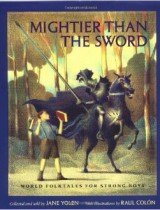
Mightier Than the Sword: World Folktales for Strong Boys
by: Jane Yolen, illustrated by: Raul Colon - (Harcourt, 2003) 128 pages.
Jane Yolen, a prolific, award-winning children's author, selected and reworked these stories from China, Germany, Ireland, Afghanistan, Finland, Angola and more. This anthology for boys serves to remind us of the virtue of strength without force. Yolen has written a similar anthology for girls, Not One Damsel in Distress: World Folktales for Strong Girls.
Perfect for: Kids who like fantasy stories.
Find Mightier Than the Sword: World Folktales for Strong Boys at your local library.
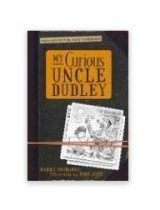
My Curious Uncle Dudley
by: Barry Yourgrau, illustrated by: Tony Auth - (Candlewick Press, 2004) 224 pages.
When 11-year-old Duncan Peckle's parents take an unexpected vacation, he is left in the temporary care of his curious, definitely eccentric Uncle Dudley. There are adventures ahead that include enchantments, elixirs, and a few amusing goblins.
Perfect for: Kids who like fantasy stories.
Find My Curious Uncle Dudley at your local library.
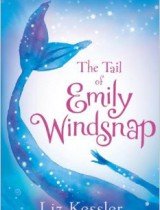
The Tail of Emily Windsnap
by: Liz Kessler, illustrated by: Sarah Gibb - (Orion Children's Books, 2004) 208 pages.
The best compliment for a book is that you hope it will never end. That is exactly the sentiment expressed when a child tells me about reading The Tail of Emily Windsnap. Although Emily lives on a boat, her parents are very wary of her being in the water. Emily discovers that she is half-mermaid and she begins to pursue the mystery of her father's disappearance. First in a series, your child will occupy many enjoyable hours with this engaging "tail."
Perfect for: Kids who like fantasy stories.
Find The Tail of Emily Windsnap at your local library.
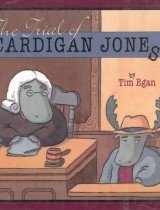
The Trial of Cardigan Jones
by: Tim Egan - (Houghton Mifflin Company, 2004) 32 pages.
Cardigan Jones, clumsy new moose in town, finds himself in the middle of the case of a missing apple pie. As he moves past many misperceptions, all is resolved in court in this Law & Order take-off for kids.
Perfect for: Kids who like fantasy stories.
Find The Trial of Cardigan Jones at your local library.
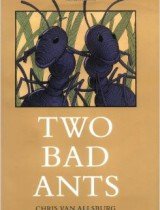
Two Bad Ants
by: Chris Van Allsburg - (Houghton Mifflin, 1988) 32 pages.
A Caldecott Medal author, Van Allsburg takes us into the world of ants. The story begins when a scout brings his queen a strange new treasure, a crystal that appeals to her sweet tooth. The ants want to please "the mother of them all," so they march off in search of more crystals for their queen. They trek through woods (grass) and survive a thunderstorm (the sound of crickets combined with dropping dew drops and the light of a passing firefly). They climb a mountain (the wall of a house) and go through a tunnel (window) to a glassy curved wall (sugar bowl). In their haste to leave "this unnatural place," they fail to notice that two have stayed behind to enjoy the feast. The artwork lends itself to the sense of mystery, all bold lines and earth tones. Will they make it home? Read the book and find out.
Perfect for: Kids who like fantasy stories.
Find Two Bad Ants at your local library.
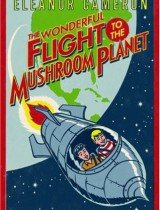
The Wonderful Flight to the Mushroom Planet
by: Eleanor Cameron - (Little, Brown and Company, 1956) 226 pages.
An early classic in children's science fiction, the story concerns two young boys who take off to a "nearby" planet in their homemade spaceship. The tiny planet is in dire trouble, and the boys are recruited to save it from certain galactic extinction. Mr. Bass and the Mushroom People are unforgettable, and the appeal of the adventures is timeless.
Perfect for: Kids who like fantasy stories.
Find The Wonderful Flight to the Mushroom Planet at your local library.
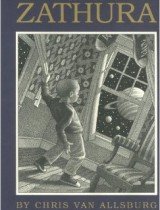
Zathura
by: Chris Van Allsburg - (Houghton Mifflin, 2002) 32 pages.
The hook: With the movie release of Chris Van Allsburg's book, Zathura, children of all ages will be eager to read the book version. Many Allsburg fans waited a long time to finally find out what happened after Judy and Peter discarded the Jumanji game in the park. We were left with the Budwing brothers as they stumbled upon the mysterious box. When they open the box, they see the Jumanji game board and another space-themed board. This board transports the players from earth to a purple planet called Zathura. Before they know it the boys are swept up in a nail-biting, outer-space adventure. Will they survive a black hole, space ships and robots? This is a must read if you've always wondered what happened to Danny and Walter Budwing.
Want to see the movie? The 2005 adaptation is loosely based on the book and offers a cautionary lesson about getting along with your siblings.
Perfect for: Kids who like fantasy stories.
Find Zathura at your local library.
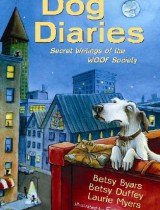
Dog Diaries: Secret Writings of the WOOF Society
by: Betsy Byars, Betsy Duffey and Laurie Myers, illustrated by: Erik Brooks - (Henry Holt, 2007) 64 pages.
These short stories show life through a dog's eyes. Some have historical settings like ancient Egypt, and some explain quirky dog behavior. All are told simply and humorously, as a dog might, so they are easily understood by younger readers.
Perfect for: Kids who like historical fiction.
Find Dog Diaries: Secret Writings of the WOOF Society at your local library.
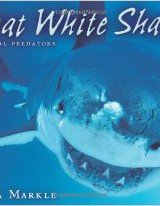
Great White Sharks
by: Sandra Markle - (Lerner Publishing Group, 2004) 40 pages.
The nonfiction aspect of this text appealed to many students, especially male students, because of the ferocious-looking shark on the cover and the many details on these predators of the deep, including their feasts on other ocean life.
Perfect for: Kids who like nonfiction and animals.
Find Great White Sharks at your local library.

Molly's Pilgrim
by: Barbara Cohen, illustrated by: Daniel Mark Duffy - (Lothrop, Lee & Shepard Books, 1983) 32 pages.
Molly's Pilgrim is a heart-wrenching story that illustrates the true meaning of Thanksgiving. Molly, a Russian immigrant, finds herself in an American school. Instead of being welcomed as the new student in the class, she is treated as an outcast. Taunting and bullying are two themes explored in this book. The children in Molly's class learn one of life's most valuable lessons – pilgrims, like people, come in all denominations, and to this day they are still coming to America in hopes of finding freedom.
Perfect for: Kids who like historical fiction.
Find Molly's Pilgrim at your local library.
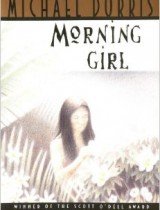
Morning Girl
by: Michael Dorris - (Hyperion Books for Children, 1992) 74 pages.
Simple story, beautifully told, appeals to kids who like thoughtful character-based stories. This lyrical look at pre-Columbian Taino culture stresses the bonds of family, and behavioral changes involved in growing up, and raises the issue of culture differences in a powerful way.
Perfect for: Kids who like historical fiction.
Find Morning Girl at your local library.
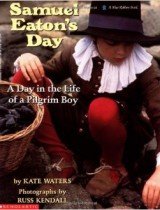
Samuel Eaton's Day: A Day in the Life of a Pilgrim Boy
by: Kate Waters, illustrated by: Russ Kendall - (Scholastic, 1993) 40 pages.
Samuel Eaton's Day, one of the author's trilogy of books about the Pilgrims, transports the reader back to life during Pilgrim times. Samuel shares the excitement and the hard work that is involved with his first harvest. Samuel quickly discovers how difficult the harvest can be. Though exhausted from the day's work, Samuel learns a valuable lesson about perseverance and the pride that comes from working together as a family.
Perfect for: Kids who like historical fiction.
Find Samuel Eaton's Day: A Day in the Life of a Pilgrim Boy at your local library.
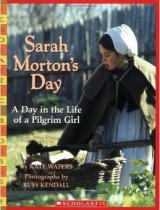
Sarah Morton's Day: A Day in the Life of a Pilgrim Girl
by: Kate Waters, illustrated by: Russ Kendall - (Scholastic, 1989) 32 pages.
Sarah Morton's Day is an excellent book about a day in the life of a Pilgrim girl and another book in Kate Water's Pilgrim trilogy. The story is set in the year 1627. Told in the first person, Sarah takes young readers on a historic field trip back in time. Photographs in the book were taken at the Plymouth Museum, which is a replica of the 1627 settlement. The historic backdrop and the words of 9-year-old Sarah invite children of all ages to experience the Pilgrim way of life. Colonial dress, food, chores, family relations, friendships, religion and play are all part of Sarah's day.
Perfect for: Kids who like historical fiction.
Find Sarah Morton's Day: A Day in the Life of a Pilgrim Girl at your local library.
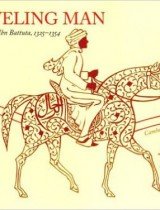
Traveling Man: The Journey of Ibn Batutta 1325-1354
by: James Rutherford - (Houghton Mifflin, 2001) 40 pages.
How better to involve your child in geography, history and the art of picture books than through the pages of a masterfully told story about one of the world's most famous travelers? Ibn Batutta's journey represents one of the first travel diaries we have; author/artist Rutherford takes young readers along on this trip through space and time.
Perfect for: Kids who like historical fiction.
Find Traveling Man: The Journey of Ibn Batutta 1325-1354 at your local library.
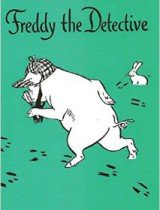
Freddy the Detective
by: Walter R. Brooks, illustrated by: Kurt Wiese - (Alfred A. Knopf, 1932) 272 pages.
Originally published in 1932, Freddy the Detective is an overlooked classic. Freddy is a pig who finds his true calling when he finds a copy of The Adventures of Sherlock Holmes in the barn one day. The witty and still very fresh vocabulary in which Freddy expresses himself is just delightful!
Perfect for: Kids who like mysteries.
Find Freddy the Detective at your local library.
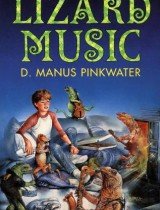
Lizard Music
by: Daniel Manus Pinkwater - (Dodd, Mead, 1976) 144 pages.
Eleven-year-old Victor is up way past bedtime when he sees something very unusual on television: a band of giant lizards performing wild music! Night after night, Victor watches this same strange yet addictive show…that apparently doesn't even exist.
Perfect for: Kids who like mysteries.
Find Lizard Music at your local library.
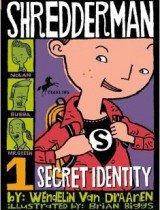
Shredderman: Secret Identity
by: Wendelin Van Draanen, illustrated by: Brian Briggs - (Random House, 2004) 144 pages.
Nolan is tired of Bubba Bixby's bullying! When the kids receive an assignment to create a newspaper expose, Nolan thinks that this is the perfect chance to truly expose Bubba. After gathering some very compromising information, Nolan creates shredderman.com, a Web site that will shield his identity while fighting back against Bubba's tyranny.
Perfect for: Kids who like mysteries.
Find Shredderman: Secret Identity at your local library.
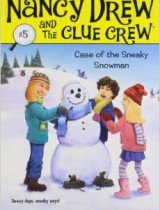
The Case of the Sneaky Snowman
by: Carolyn Keene, illustrated by: Macky Pamintuan - (Aladdin, 2006) 96 pages.
Nancy Drew continues to march into the 21st century with its ubiquitously pen-named writer, Carolyn Keene. In this fifth book in the new Nancy series, "Nancy Drew and the Clue Crew," a mystery unfolds in a wintry setting. After pretending to read her hot chocolate marshmallows to predict the future, Nancy's friend Deirdre is surprised when her predictions begin to come true! Classic Nancy Drew sleuthing ensues and makes for a perfect, cozy winter's night read.
Perfect for: Kids who like mysteries.
Find The Case of the Sneaky Snowman at your local library.
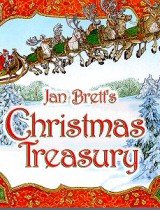
Jan Brett's Christmas Treasury
by: Jan Brett - (Putnam Juvenile, 2001) 256 pages.
This beautiful Jan Brett collection features some of her best winter and Christmas stories. Some of the titles included in the treasury are "The Mitten" and "Christmas Trolls." Jan Brett's signature illustrations adorn each story, filling it with bright, festive colors.
Perfect for: Kids who like holidays.
Find Jan Brett's Christmas Treasury at your local library.
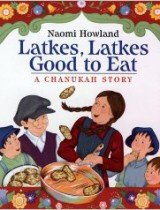
Latkes, Latkes, Good to Eat: A Chanukah Story
by: Naomi Howland - (Clarion Books, 1999) 32 pages.
Sadie's kindness is rewarded when an old woman gives her a magical frying pan. When magic words are spoken, the pan fills with delicious latkes. Unfortunately, trouble occurs when Sadie leaves the pan in the hands of her younger brothers.
Perfect for: Kids who like holidays.
Find Latkes, Latkes, Good to Eat: A Chanukah Story at your local library.
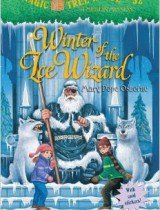
Winter of the Ice Wizard
by: Mary Pope Osborne - (Random House, 2004) 128 pages.
If you are a fan of the Magic Tree House series, you are sure to love Mary Pope Osborne's next adventure into the magical frozen land of the Ice Wizard. Jack and Annie are summoned by their friends from Camelot — Teddy and Kathleen — to help solve the mystery of the disappearance of Merlin and Morgan Le Fay. The team is equipped with only two things to help them: a mysterious rhyme from the Ice Wizard and a magical rope. Will they find Merlin and Morgan Le Fay? Are you brave enough to travel along?
Perfect for: Kids who like fantasy stories.
Find Winter of the Ice Wizard at your local library.
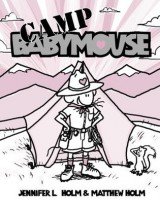
Babymouse: Camp Babymouse
by: Jennifer L. Holm & Matthew Holm - (Random House, 2007) 96 pages.
The hook: The sixth installment of the Babymouse series finds our heroine at summer camp. She doesn't like the great outdoors, but that fact shouldn't get in the way of her having fun, right? Babymouse has her usual daydreams of how she'll be the best camper around, but all she finds is trouble. Babymouse's cabin-mates, the Buttercups, soon become frustrated with her shenanigans, as she racks up nothing but demerits for her team. The illustrations are as fun and humorous as ever, in the familiar black, white and pink. Graphic novels are incredibly popular with tweens and teens, so it follows that younger kids want them as well. And those for the very young — especially for young girls — are few and far between, but gaining a foothold. Here is a well-established series that fills that void with a spirited, likable, adventurous character.
Perfect for: Kids who like humor stories.
Find our favorites at your local library: Camp Babymouse, Queen of the World, Puppy Love , The Musical.
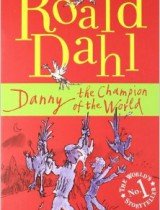
Danny: The Champion of the World
by: Roald Dahl, illustrated by: Quentin Blake - (Knopf/Random House, 1975) 224 pages.
Kids who loved the recent movie version of Roald Dahl's Charlie and the Chocolate Factory will surely agree that Danny: Champion of the World is fabulous! Danny is a boy who has a great life with his father. Danny thinks he knows everything there is to know about his dad, until one day he learns about his father's secret life. Danny's dad is a poacher. If you want to know what a poacher does, and you want to laugh your way through Danny and his father's dealings with a bad neighbor and pheasants, you must devour this hilarious book.
Perfect for: Kids who like humor stories.
Find Danny: The Champion of the World at your local library.
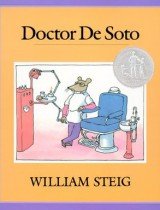
Doctor De Soto
by: William Steig - (Farrar, Straus and Giroux, 1990) 32 pages.
A very cheerful story about a mouse-dentist who treats mammals bigger than himself, wearing rubbers to keep his feet dry when he's in their mouths. Steig's cartoony color illustrations make up the bulk of the book, and they are nothing short of urbane and funny. The climax comes when a dapperly dressed but hungry fox comes for a new gold tooth, and the quick-witted dentist saves himself from ingestion by means of his professional skills. 32 pages.
Perfect for: Kids who like humor stories.
Find Doctor De Soto at your local library.
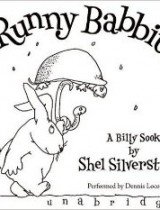
Runny Babbit: A Billy Sook
by: Shel Silverstein - (HarperCollins Children's Books, 2005) 96 pages.
Nonsensical word play will entice readers to try reading this poetry aloud. A simple switch in the beginning letters of certain words makes language fun and the resulting sounds smile-crackingly funny.
Perfect for: Kids who like humor stories.
Find Runny Babbit: A Billy Sook at your local library.
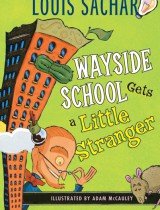
Wayside School Gets a Little Stranger
by: Louis Sachar - (Morrow Junior Books, 1995) 169 pages.
Surely, Wayside School was already strange enough. The builders built a 30-story school sideways with the rooms piled one on top of another – except for the 19th floor where Miss Zarves teaches class. There is no 19th floor, and there is no Miss Zarves. Nevertheless, there is a 13th floor, where nice Mrs. Jewls presides over her eccentric pupils. Mrs. Jewls, however, takes a maternity leave. Before she returns with her little stranger, Wayside School gets a little stranger. While reading this ridiculously funny book, children will not only be laughing, they will be learning.
Perfect for: Kids who like humor stories.
Find Wayside School Gets a Little Stranger at your local library.
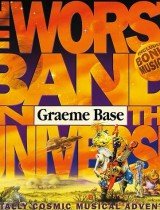
The Worst Band in the Universe
by: Graeme Base - (Harry N. Abrams, 1999) 48 pages.
Alien fantasies come and go, but this one has focus. Base has created a universe where music, or the lack thereof, separates the planets and gives them their distinct personalities. It's all about freedom of musical expression, as Sprocc, a young Splingtwanger-player, enters the annual competition for Worst Band in the Universe, a true award of honor. Base's rhyming verse is delicious fun, and there is the added bonus of a CD of intergalactic songs, composed and performed by the author himself. This is a gift of cosmic proportions and hours of fun.
Perfect for: Kids who like humor stories.
Find The Worst Band in the Universe at your local library.
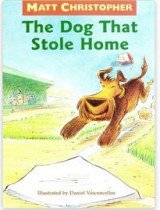
The Dog That Stole Home
by: Matt Christopher - (Little, Brown, 1996) 42 pages.
Mike owes his success in baseball to his advisor, his dog Harry. It turns out that Harry is a great base coach. Sports-minded children will love this book as well as The Dog That Pitched a No-Hitter and The Dog That Stole Football Plays and more by the same author.
Perfect for: Kids who like sports.
Find The Dog That Stole Home at your local library.
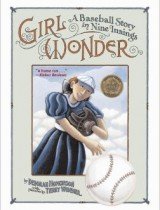
Girl Wonder: A Baseball Story in Nine Innings
by: Deborah Hopkinson, illustrated by: Terry Widener - (Atheneum, 2003) 40 pages.
This nine-part story was inspired by the life of Alta Weiss, a girl who pitched for a semi-pro men's baseball team in 1907. Alta has a killer fastball and a hot glove that earn her the nickname "Girl Wonder." When Alta finishes her pitching career she heads to medical school, the only woman in her graduating class. A chronology of the highlights of women in baseball concludes the book. It only took 108 years and a lawsuit for girls to get to play Little League and Hopkinson honors all the women along the way who insisted that a woman's place was on the field.
Perfect for: Kids who like sports.
Find Girl Wonder: A Baseball Story in Nine Innings at your local library.
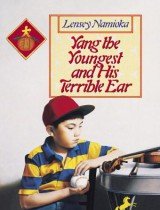
Yang the Youngest and His Terrible Ear
by: Lensey Namioka - (Joy Street Books, 1992) 144 pages.
Yingtao is the only one in his family with no musical talent. His father, however, insists that he continues to play the violin. How will he survive daily music lessons and recitals when all he really wants to do is play baseball, his true, natural talent?
Perfect for: Kids who like music.
Find Yang the Youngest and His Terrible Ear at your local library.
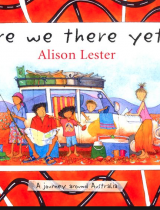
Are We There Yet?
by: Alison Lester - (Kane/Miller Book Publishers, 2005) 32 pages.
Alison Lester, an Australian-born author and illustrator, has written a lovely introduction to Australia for young readers. Through the eyes of 8-year-old Grace, we tag along for a six-month journey around Australia with her family.
Perfect for: Kids who like to learn about cultures.
Find Are We There Yet? at your local library.
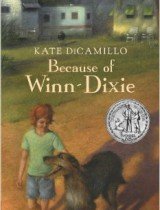
Because of Winn-Dixie
by: Kate DiCamillo - (Candlewick, 2000) 182 pages.
The hook: Because of a hysterical encounter with Winn-Dixie, a stray but lovable dog, India Opal's life changes forever. Opal is forced to deal with the absence of her mother and a father who is absorbed in his work. One day she stumbles upon a stray dog in the Winn-Dixie grocery and it's love at first sight. Opal adopts the dog and he helps her make friends with people that the town-folks have labeled as strange and different. This is a beautiful story about friendship, forgiveness, and tolerance.
Want to see the movie? Check out the family-friendly 2005 adaptation.
Perfect for: Kids who like making friends.
Find Because of Winn-Dixie at your local library.
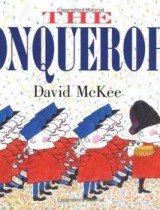
The Conquerors
by: David McKee - (Handprint Books, 2004) 32 pages.
Imagine an army that is treated so well by the country it invades that it loses its will to conquer. This one deserves a place alongside Seuss's The Butter Battle Book. It is the kind of well told story that parents can refer back to during difficult conversations for years. The artwork is warm and subtle and the message is timeless: Love is always more fun than war.
Perfect for: Kids who like historical fiction.
Find The Conquerors at your local library.
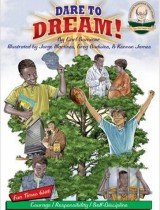
Dare to Dream!
by: Carl Sommer, illustrated by: Jorge Martinez, Greg Budwine, and Kennon James - (Advance Publishing, 2007) 48 pages.
By listening to stories told by his father and grandparents, a young boy learns how choices can lead to overcoming adversity. The lives of Abraham Lincoln, George Washington Carver, Ben Franklin and Helen Keller are highlighted.
Perfect for: Kids who like historical fiction.
Find Dare to Dream! at your local library.
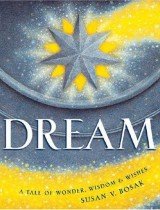
Dream: A Tale of Wonder, Wisdom & Wishes
by: Susan V. Bosak - (TCP Press, 2004) 40 pages.
Children are whisked away on a vibrant journey of hopes and dreams. The book's message, to embrace your dreams, is told through poetic verse and the beautiful artwork of 15 celebrated illustrators.
Perfect for: Kids who like poetry.
Find Dream: A Tale of Wonder, Wisdom & Wishes at your local library.
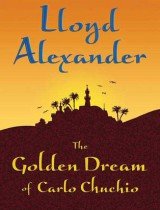
The Golden Dream of Carlo Chuchio
by: Lloyd Alexander - (Henry Holt & Company, 2007) 306 pages.
This book is the author's last, a rousing, delightful adventure. There's a fair amount of violence here, some rather brutal, though none graphically described. Many deaths occur by a variety of weapons and methods, and a major character is beaten unconscious. Families can talk about the popular literary theme of setting out into the world to find one's fortune. Do people really do that? Do you expect to one day? Is there a modern equivalent that, perhaps, involves less violence?
Perfect for: Kids who like realism.
Find The Golden Dream of Carlo Chuchio at your local library.
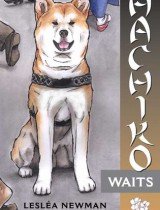
Hachiko Waits
by: Leslea Newman, illustrated by: Machiyo Kodaira - (Henry Holt, 2004) 96 pages.
This Japanese story of a dog whose devotion inspired a nation is an ideal bridge from picture books to chapter books. Short illustrated chapters, author's notes, and a glossary honor a faithful Akita that met the commuter train from Shibuya Station every afternoon for 10 years, patiently waiting for a master who never returned. Newman's touching story can't be read or heard without tears and a true understanding of the word 'loyalty'.
Perfect for: Kids who like to learn about cultures.
Find Hachiko Waits at your local library.
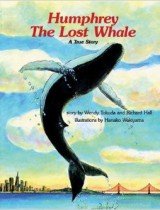
Humphrey the Lost Whale: A True Story
by: Wendy Tokuda & Richard Hall, illustrated by: Hanako Wakiyama - (Heian International, 1986) 32 pages.
This is based on the journey of a California humpback whale, "wrong way" Humphrey, who finds his way back to the sea with the help of many people.
Perfect for: Kids who like nonfiction and animals.
Find Humphrey the Lost Whale: A True Story at your local library.
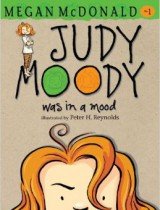
Judy Moody Was in a Mood
by: Megan McDonald - (Candlewick, 2000) 176 pages.
Yes, Judy is a third-grade girl but she is very much the tomboy and boys love this series as much as girls. The series does a great job of captivating unmotivated readers who are making the transition into chapter books. Children will relate to Judy's constant dilemmas and will laugh their way through the book as Judy comes up with the most intriguing solutions to problems such as having to sit next to a kid who eats paste and a toad that pees on her!
Perfect for: Kids who like realism.
Find our favorites at your local library: Judy Moody Was in a Mood, Judy Moody Gets Famous!, Judy Moody Saves the World!
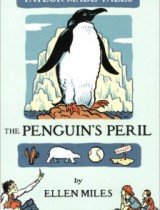
The Penguin's Peril: Taylor-Made Tales #4
by: Ellen Miles - (Scholastic, 2007) 110 pages.
Jason's teacher, Mr. Taylor, loves a challenge. Give him five objects and he'll work them all into a story of his own creation. When Jason gives Mr. Taylor the "ultimate challenge" list — a penguin, a polar bear, a cactus, quicksand and a baseball — he enthralls the class with an arctic adventure. Meanwhile, in Jason's day-to-day life, he has to take flak from his classmates when they find out that he loves to cook. And he just can't seem to convince his chef dad to let him help out at the family restaurant. Both stories end happily — especially when Jason's dad and classmates get a taste of his signature sandwich, the Amazin' Jason. The Penguin's Peril is a testament to the power of storytelling and will inspire young readers to be true to themselves.
Perfect for: Kids who like adventure stories.
Find The Penguin's Peril: Taylor-Made Tales #4 at your local library.
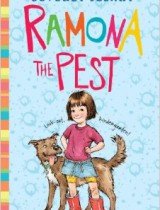
Ramona the Pest
by: Beverly Cleary, illustrated by: Tracy Dockray - (William Morrow and Company, 1968) 208 pages.
Ramona the Pest is one of Beverly Cleary's most iconic of her classic stories about the feisty Ramona. Children are sure to love hearing about Ramona's troubles in Miss Binney's kindergarten. Ramona fans will also enjoy Beezus and Ramona and Ramona Quimby, Age 8.
Perfect for: Inventive kids with creative ideas to cure boredom and update old rules.
Find Ramona the Pest at your local library.
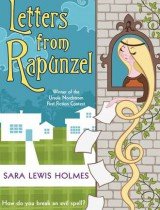
Letters from Rapunzel
by: Sara Lewis Holmes - (HarperCollins, 2007) 184 pages.
This is a bittersweet and uplifting story of a young girl coping with the fact that her father is hospitalized for clinical depression. "Rapunzel" (you don't learn her real name until the end of the book) comes home one day to find the lights off and her father curled up in his favorite red chair, crying. Soon he's in a mental institution and her mother refuses to talk about it. By chance, she finds a letter in her father's chair addressed to a post office box. She writes to this post office box, hoping that the person her father was writing to will help her understand what is happening. Told through her letters, this novel is poignant and emotionally raw. "Rapunzel" is the type of character you immediately bring into your heart. Her humor, courage and intelligence will resonate with the reader.
Perfect for: Kids who like realism.
Find Letters from Rapunzel at your local library.
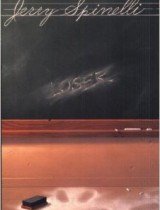
Loser
by: Jerry Spinelli - (Joanna Cotler Books, 2002) 218 pages.
It's moving, funny, lyrical and has powerful appeal. There is so much to discuss here that a family, or a class, could spend days talking it over, which is why it is already a favorite with discussion groups. Two of the biggest topics are what it means to be human and what it means to grow up. Try combining it with a movie about growing up, such as Wide Awake, or one about not growing up, such as Peter Pan.
Perfect for: Kids who like realism.
Find Loser at your local library.
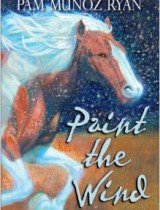
Paint the Wind
by: Pam Munoz Ryan - (Scholastic Press, 2007) 327 pages.
Uniquely told by weaving together the adventures of 11-year-old Maya with those of Artemisia, a wild horse in the remote Wyoming wilderness, this is a beautiful coming-of-age story about relationships and making tough decisions. With the death of her grandmother, Maya is thrust into a totally foreign lifestyle. Accustomed to a rigid and formal urban household, Maya suddenly finds herself on a rural ranch surrounded by loving and caring people. Artemisia, who runs in a herd near Maya's new home, is also forced into a new situation when a horse round-up separates her from the rest of her herd. Discovering one another, the two develop a bond that will be tested under severe conditions. The addition of a glossary and a list of websites dealing with the subject of wild horses in America make this a must-read for any horse lover.
Perfect for: Kids who love horses.
Find Paint the Wind at your local library.
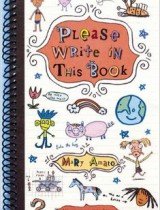
Please Write in This Book
by: Mary Amato, illustrated by: Eric Brace - (Holiday House, 2006) 97 pages.
Ms. Wurtz hides a book in the writer's corner, inviting her students to write on its blank pages. Conversations, pictures, charts and stories find their way into it.
Perfect for: Kids who like realism.
Find Please Write in This Book at your local library.
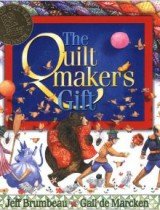
The Quiltmaker's Gift
by: Jeff Brumbeau, illustrated by: Gail de Marcken - (Scholastic Press, 2000) 56 pages.
This beautifully written and illustrated book will appeal to a wide range of ages. Its story of materialism verses charity addresses the value of giving and encourages children to reach out to help others. The story of a greedy king and the lesson he learns helps children get perspective on what is important.
Perfect for: Kids who like adventure stories.
Find The Quiltmaker's Gift at your local library.
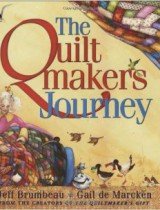
The Quiltmaker's Journey
by: Jeff Brumbeau, illustrated by: Gail de Marcken - (Orchard Books, 2005) 56 pages.
A prequel to The Quiltmaker's Gift. The vivid, intricately designed watercolor illustrations add drama and life to the story of a young wealthy child who, one night, steps out of a walled city to find the world beyond. She becomes a quiltmaker after her elders reject her idea of helping the needy. Another poignant message for children of all ages.
Perfect for: Kids who like adventure stories.
Find The Quiltmaker's Journey at your local library.
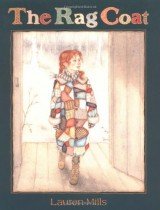
The Rag Coat
by: Lauren Mills - (Little, Brown Young Readers, 1991) 32 pages.
This is a heartwarming story of how a community comes together to help Minna, a little girl who so badly wants to attend school, but has no coat. The story deals with death and poverty in a real and positive way with a loving solution. It's a sweet, sober tale about love and goodwill.
Perfect for: Kids who like realism.
Find The Rag Coat at your local library.
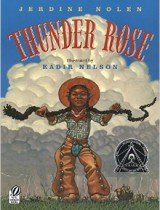
Thunder Rose
by: Jerdine Nolen, illustrated by: Kadir Nelson - (Harcourt Brace, 2003) 32 pages.
Nolen and Nelson give us a spunky cowgirl heroine of the West who names herself Thunder Rose. Rose is resourceful and fearless, and no challenge defeats her, not stampeding cattle, drought, tornadoes, hooligans nor desperadoes. With a sweet disposition, sassy pigtails and a 'can do' attitude, Rose's story stretches both the imagination and the vocabulary.
Perfect for: Kids who like realism.
Find Thunder Rose at your local library.
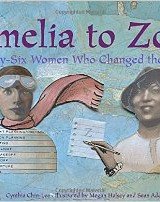
Amelia to Zora: Twenty-six Women Who Changed the World
by: Cynthia Chin-Lee, illustrated by: Megan Halsey and Sean Addy - (Charlesbridge Publishing, 2005) 32 pages.
The author creates an alphabet book using the first names of the 26 women who have made impressive contributions to the world. The women came from different ethnic groups and countries.
Perfect for: Kids who like to read about real people.
Find Amelia to Zora: Twenty-six Women Who Changed the World at your local library.
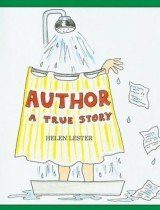
Author: A True Story
by: Helen Lester - (Houghton Mifflin/Walter Lorraine Books, 1997) 32 pages.
Author Helen Lester writes a humorous tale about her life from age three to adulthood. She describes how she became a writer, citing her achievements and challenges, including overcoming dyslexia, along the way. This cheerful book will inspire the writer within your child.
Perfect for: Kids who like to read about real people.
Find Author: A True Story at your local library.
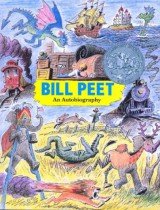
Bill Peet: An Autobiography
by: Bill Peet - (Houghton Mifflin Children's Books, 1989) 189 pages.
Bill Peet, a former Disney illustrator, shares his life story in this book. Written as a simple children's story, this irresistible autobiography boasts lots of funny drawings, including favorite Disney characters.
Perfect for: Kids who like to read about real people.
Find Bill Peet: An Autobiography at your local library.
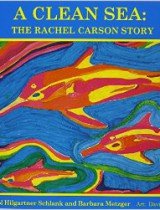
Clean Sea: Story of Rachel Carson
by: Carol Hilgartner Schlank and Barbara Metzger, illustrated by: David Katz - (Cascade Pass, 1995) 38 pages.
Rachel Carson has long been considered the original environmentalist. Her publication of Silent Spring in the 1960s was the impetus for President Kennedy to call for a scientific study of the questions she raised about the environment. Here now we have an accessible, empowering biography of this unsung heroine for boys and girls that care about the environment. Included are several lesson plans, as well as recommended reading on steps to save the environment. A DVD entitled Cartoon Sea stresses the importance of keeping oceans free from pollution.
Perfect for: Kids who like to read about real people.
Find Clean Sea: Story of Rachel Carson at your local library.
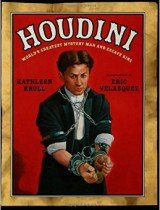
Houdini: World's Greatest Mystery Man and Escape King
by: Kathleen Krull, illustrated by: Eric Velasquez - (Walker and Company, 2005) 28 pages.
In this picture book biography of the magician Harry Houdini (born Erik Weiss), the author emphasizes the qualities of perseverance, dedication and a commitment to self-improvement that made Houdini so successful. Even as a young boy he was performing a trapeze act in his backyard for paying audiences, billing himself as "Prince of the Air." Interspersed throughout the book are presentations of his most famous and amazing performances, narrated by a costumed master of ceremonies with the readers cast as audience members. This would be the perfect book for kids fascinated by all things magical.
Perfect for: Kids who like to read about real people.
Find Houdini: World's Greatest Mystery Man and Escape King at your local library.

Leonardo da Vinci
by: Diane Stanley - (Morrow Junior Books, 1996) 44 pages.
The picture-book format and outstanding illustrations make it highly appealing for children. The text is friendly and loaded with interesting details about the subject.
Perfect for: Kids who like to read about real people.
Find Leonardo da Vinci at your local library.
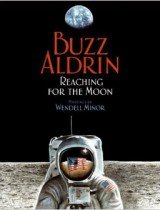
Reaching for the Moon
by: Buzz Aldrin, illustrated by: Wendell Minor - (HarperCollins, 2005) 40 pages.
Buzz Aldrin, the second man to walk on the moon, writes this autobiographical work as page-long vignettes of highlights from his life. He writes about how he got his unusual nickname (from his sister), his favorite movie hero (the Lone Ranger), how he almost drowned one summer, his military life, and his training and missions as an astronaut. The beautiful paintings that illustrate the book add to the appeal, especially the images of Aldrin's space flights. Aldrin closes his book with an inspirational message to young readers: "If you set your sights high, you may accomplish more than you ever dreamed was possible." This would be the perfect choice for aspiring young astronauts.
Perfect for: Kids who like to read about real people.
Find Reaching for the Moon at your local library.
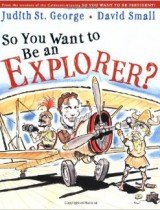
So You Want to Be an Explorer?
by: Judith St. George, illustrated by: David Small - (Philomel, 2005) 56 pages.
From Buzz Aldrin to Charles Yeager, Caldecott award winners Judith St. George and David Small take us on a fun romp through the excellent discoveries (and great mishaps) of the great and infamous explorers of the world.
Perfect for: Kids who like to read about real people.
Find So You Want to Be an Explorer? at your local library.
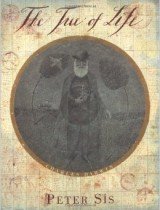
The Tree of Life: A Book Depicting the Life of Charles Darwin: Naturalist, Geologist & Thinker
by: Peter Sis - (Farrar Straus & Giroux, 2003) 32 pages.
For just the right child between the ages of 8 and 12 this book will be a treasure trove, but many children may need a bit of parental help to make sense of the book's design and give a context for the bountiful amount of information. Some of the exquisitely drawn illustrations are small and subtle in meaning, and the typeface used in the illustrations could be challenging for young readers as well. The subject matter of the biography will be of interest to adult as well as child readers, and this book might best be enjoyed in a joint first reading.
Perfect for: Kids who like to read about real people.
Find The Tree of Life: A Book Depicting the Life of Charles Darwin: Naturalist, Geologist & Thinker at your local library.
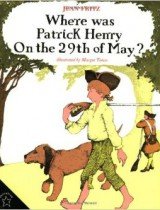
Where Was Patrick Henry on the 29th of May?
by: Jean Fritz, illustrated by: Margot Tomes - (Penguin Putnam, 1975) 48 pages.
This is a fast-paced account of one of America's most influential statesmen. Patrick Henry's childhood and career are described in simple sentences, using a clever plot device (the date in the title); both the black-and-white and color illustrations are very simple.
Perfect for: Kids who like to read about real people.
Find Where Was Patrick Henry on the 29th of May? at your local library.
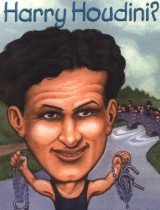
Who Was Harry Houdini?
by: Tui Sutherland, illustrated by: John O'Brien - (Grosset & Dunlap, 2002) 112 pages.
This is an excellent series of biographies and includes books on Benjamin Franklin, Harriet Tubman and Leonardo da Vinci. Written in a fun, conversational style that grabs even the most reluctant reader!
Perfect for: Kids who like to read about real people.
Find Who Was Harry Houdini? at your local library.
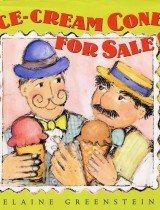
Ice-Cream Cones for Sale
by: Elaine Greenstein - (Arthur A. Levine Books, 2003) 32 pages.
In spring our thoughts turn to flowers, baseball, and ICE CREAM! With winter's chill a memory, the lines at the local Dairy Queen appear over night and everyone is ready for that first, delicious chocolate-dipped ice cream cone. In an excellent informational book, Greenstein uses careful research to answer the question, "Who was that sainted person who invented the ice cream cone?" We know ice cream cones first appeared nationally at the St. Louis World's Fair in 1904. But there were over fifty ice cream sellers and dozens of waffle makers, so who put the two together? Five men and one woman claim they were the first to combine tasty waffles, shaped into a cone, with yummy ice cream. But the frozen delight honor goes to Italo Marchiony, an Italian immigrant who was selling ice cream cones from a push cart on the streets of New York in 1895. No one knows for sure how he came up with the idea of an edible cone to replace glass dishes, but it's a mystery worth pondering, while licking that perfect ice cream cone, of course.
Perfect for: Kids who like to cook.
Find Ice-Cream Cones for Sale at your local library.
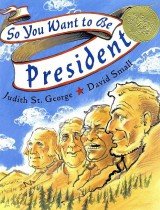
So You Want to Be President?
by: Judith St. George, illustrated by: David Small - (Philomel Books, 2000) 56 pages.
Books about the presidents are usually boring, but not this one. This is a lighthearted look at the presidency, including the ages, looks, backgrounds, occupations, pets, favorite sports and personalities of the men who've lived in the White House. St. George outlines the positive points about being president (big house with its own swimming pool, bowling alley and movie theater) and negative points (having to dress up, never get to go anywhere alone and lots of homework). David Small's cartoon-style illustrations add to the fun. The book concludes with the oath of office, and there is an appended list of brief biographical sketches of each of the presidents. This would be a timely read with the presidential race that's already beginning.
Perfect for: Kids who like history.
Find So You Want to Be President? at your local library.
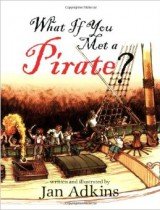
What If You Met a Pirate?
by: Jan Adkins - (Roaring Brook Press, 2004) 32 pages.
Every pirate myth and fact is chronicled in detail in Adkins' meticulously illustrated informational text. Real pirates weren't flashy dressers, seldom carried pistols, swords, or cutlasses, did wear earrings, and were experts with a needle and thread. Furthermore, rats and lice and the threat of a bath were greater enemies than the British Navy. Readers will learn about grog, hardtack, buccaneers, the dead man's chest, and who Blackbeard was in this outstanding book that really is a treasure.
Perfect for: Kids who like history.
Find What If You Met a Pirate? at your local library.
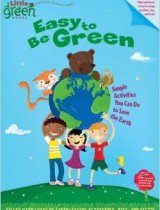
Easy to Be Green: Simple Activities You Can Do to Save the Earth
by: Ellie O'Ryan, illustrated by: Ivanke & Lola - (Simon Scribbles, 2009) 32 pages.
What can kids do to protect the environment? A lot! Easy to Be Green is filled with simple eco-friendly tips and activities children can try at home. A perfect way to make the concept of green living accessible and fun.
Perfect for: Kids who like science and nature.
Find Easy to Be Green: Simple Activities You Can Do to Save the Earth at your local library.
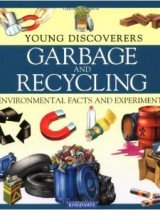
Garbage and Recycling (Young Discoverers: Environmental Facts and Experiments)
by: Rosie Harlow and Sally Morgan - (Kingfisher, 1995) 32 pages.
Part of Kingfisher's wonderful Young Discoverers series, Garbage and Recycling illustrates the difference between biodegradable and nonbiodegradable garbage. Explanations of how glass, metal and wool can be easily recycled; "how can I help?" sections; and lots of tips will inspire your child to be a young environmentalist who wants to recycle at home.
Perfect for: Kids who like science and nature.
Find Garbage and Recycling (Young Discoverers: Environmental Facts and Experiments) at your local library.
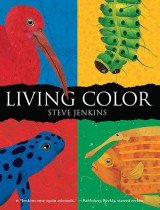
Living Color
by: Steve Jenkins - (Houghton Mifflin, 2007) 32 pages.
This book examines how the amazing range of colors in the animal world works to help animals survive in their natural habitats. Animals use color to attract a mate, lure prey, camouflage themselves or startle enemies. Organized by colors, the book is illustrated by Jenkins' signature torn- and cut-paper illustrations of each animal, with a short paragraph explaining how color works for that species. Additional information about animal coloration and the particular species pictured is found at the end of the book. This book is a visual treat, as well as fascinating reading for young naturalists.
Perfect for: Kids who like science and nature.
Find Living Color at your local library.
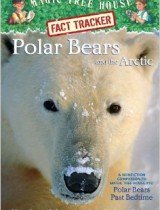
Polar Bears and the Arctic (Magic Tree House Research Guides)
by: Mary Pope Osborne - (Random House, 2007) 119 pages.
In this nonfiction companion to Polar Bears Past Bedtime, the Magic Tree House characters Jack and Annie take their readers on a chilly journey to the Arctic as they find out what it's really like to live there. The familiar twosome cover a lot of ground – landscape, animals, the lives and cultures of native people, and the effects of global warming. The style — narrative with a healthy smattering of illustrations, photos and weird facts — will easily hold a young reader's attention.
Perfect for: Kids who like science and nature.
Find Polar Bears and the Arctic (Magic Tree House Research Guides) at your local library.
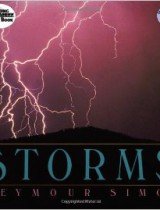
Storms
by: Seymour Simon - (Morrow Junior Books, 1989) 32 pages.
Brilliant full-color photographs of thunderstorms, hailstorms, tornadoes and hurricanes accompany the factual text of this beautiful informational book. Simon carefully explains how storms form and describes the havoc they wreak on humans who are still fascinated with the power of weather. Simon includes not only what we do know, but also what we don't, in a book that sheds light on all those mysterious symbols, diagrams and maps on the weather channel.
Perfect for: Kids who like science and nature.
Find Storms at your local library.
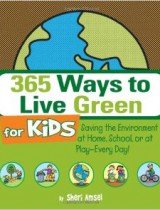
365 Ways to Live Green for Kids: Saving the Environment at Home, School, or at Play — Every Day!
by: Sheri Amsel - (Adams Media, 2009) 224 pages.
As more parents realize the importance of teaching their children about green living, the need for everyday, eco-friendly lessons grows. With activities for home and school and during playtime, 365 Ways shows how easy and fun it is to prepare your kids for a better future.
Perfect for: Kids who like science and nature.
Find 365 Ways to Live Green for Kids: Saving the Environment at Home, School, or at Play — Every Day! at your local library.
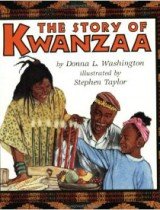
The Story of Kwanzaa
by: Donna L. Washington, illustrated by: Stephen Taylor - (HarperTrophy, 1997) 40 pages.
Learn about the origins of Kwanzaa. The seven principles or beliefs of the holiday are explained in detail and accompanied by lovely illustrations. Recipes and crafts ideas are also included.
Perfect for: Kids who like holidays.
Find The Story of Kwanzaa at your local library.
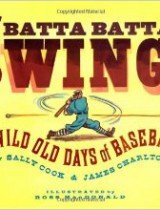
Hey Batta Batta Swing! The Wild Old Days of Baseball
by: Sally Cook and James Charlton, illustrated by: Ross MacDonald - (M.K. McElderry Books, 2007) 48 pages.
Who can resist the title of this book? Certainly not young baseball fans who will delight in this comical history of the great American pastime. Readers learn tantalizing tidbits about the history of the game, like the facts that in the early days teams had no specific uniforms and that base running was once a contact sport. The amusing illustrations add to the fun, and colorful baseball slang is defined in page margins.
Perfect for: Kids who like sports.
Find Hey Batta Batta Swing! The Wild Old Days of Baseball at your local library.
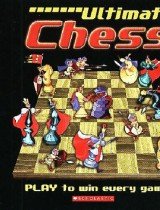
Ultimate Chess
by: Jon Tremaine - (Scholastic Inc., 2006) 48 pages.
Opening this 8-by-8-inch book reveals a magnetic chess board on the inside back cover, so all the lessons can be played as they're read. Forty-seven spiral-bound pages contain valuable lessons: names and images of the playing pieces, the set-up, how each piece moves, castling, how a pawn becomes a queen, check, checkmate, notation (so you can keep track of both players' moves), relative strength of the pieces, classic game openings, attacks and defenses. Finally all the lessons are put to use in the playing of two complete games. The first is a 20-move game with comments on the reasons for certain moves; next is the analysis of an actual 45-turn game played by two grand masters.
Perfect for: Kids who like sports and games.
Find Ultimate Chess at your local library.
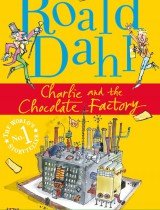
Charlie and the Chocolate Factory
by: Roald Dahl - (A.A. Knopf, 1964) 180 pages.
The hook: Willie Wonka's chocolate factory invites five lucky lottery winners to tour the facility and observe its amazing secrets. Four of the visiting children are nasty brats who will get exactly what they deserve. Only Charlie is worthy. Wild, hysterical, irreverent but ethical — it's a classic modern fable that ridicules greed.
Want to see the movie? Kids may be more drawn to the chaotic, colorful 2005 adaptation starring Johnny Depp, but the original Willy Wonka and the Chocolate Factory (1971), which was written by Dahl himself, is a gentler take that still stands up today.
Perfect for: Kids who like classic stories.
FindCharlie and the Chocolate Factory at your local library.
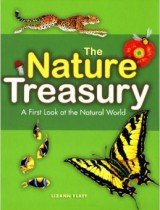
The Nature Treasury: A First Look at the Natural World
by: Lizann Flatt - (Owlkids Books, 2005) 48 pages.
Answering your youngster's questions about plants, animals, water, and just about anything else having to do with nature is easy with this reference book in hand. Broken up into 22 sections, The Nature Treasury covers topics like "How animals grow," "Soil up close," and "What animals eat." With double-page spreads depicting ecosystems ranging from savannas to tundras, this book will have kids searching the panoramas for the animals that live there. Large labeled ovals with the animals superimposed on them act as guides, so children can scan the scenes to find where the sea stars are hiding in the coral reef or the sidewinder in the desert. Children will be enchanted by the lush illustrations.
Perfect for: Kids who are curious — and parents who don't know all the answers!
Find The Nature Treasury: A First Look at the Natural World at your local library.
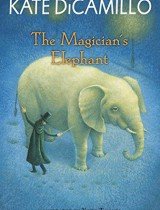
The Magician's Elephant
by: Kate DiCamillo, illustrated by: Yoko Tanaka - (Candlewick Press, 2009) 224 pages.
Gargoyles, illusionists, an elephant that falls from the sky when a magician's trick fails, and a 10-year-old orphan comprise the cast of characters for Kate DiCamillo's novel. Full of magical events and narrated in an equally captivating voice, this tale of hope, darkness, and illusion is brought to life by Yoko Tanaka's haunting black-and-white artwork. All in all, it would be hard to go wrong with this book. Find The Magician's Elephant at your local library.
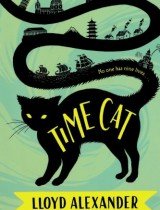
Time Cat
by: Lloyd Alexander - (Puffin, 1963) 240 pages.
In Time Cat, a young boy discovers that his cat, instead of having nine lives, has the ability to travel through time nine times. Thus begins their adventures. One parent writes, "My then-fourth-grade son loved Time Cat. He's not a reader but couldn't put this book down." Find Time Cat at your local library.
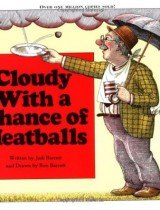
Cloudy With a Chance of Meatballs
by: Judi Barrett, illustrated by: Ron Barrett - (Atheneum Books for Young Readers, 1978) 32 pages.
Residents of the remarkable town of Chewandswallow don't have normal weather like rain, wind, and snow. Instead they get food falling from the sky three times a day, at breakfast, lunch, and dinner. It might be mashed potatoes, soup, pancakes, or hamburgers! But when the portions start getting larger, the town can't keep up with the flood of food and something has to be done. Get ready to giggle at the absurd text and detailed illustrations. This 1978 story is a fun read-aloud for all ages and a good challenge for young readers.
Want to see the movie? The 2009 animated film takes the book's idea of food-filled weather and runs with it.
Perfect for: Kids with a silly sense of humor.
Find Cloudy With a Chance of Meatballs at your local library.
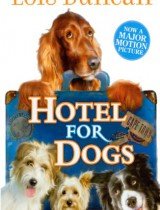
Hotel for Dogs
by: Lois Duncan - (Scholastic, 2008) 178 pages.
A whimsical tale about a brother and sister who, out of their love for dogs, turn an abandoned house into a hotel for strays. Find Hotel for Dogs at your local library.
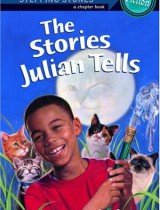
The Stories Julian Tells
by: Ann Cameron - (Random House, 1981) 80 pages.
Julian loves to make up tall tales and make his little brother, Huey, believe them. Each chapter in this wonderful early-reader's chapter book is an individual story and makes for a great introduction to the concept of short stories in general. The tales are imaginative, fun and a great depiction of a loving family in everyday situations. The bite-size length of the chapters keeps the book from feeling overwhelming for a young reader.
Perfect for: Kids who like classics.
Find The Stories Julian Tells at your local library.
What Are Good Chapter Books for 3rd Graders
Source: https://www.greatschools.org/gk/book-lists/favorite-books-for-third-graders/
0 Response to "What Are Good Chapter Books for 3rd Graders"
Post a Comment